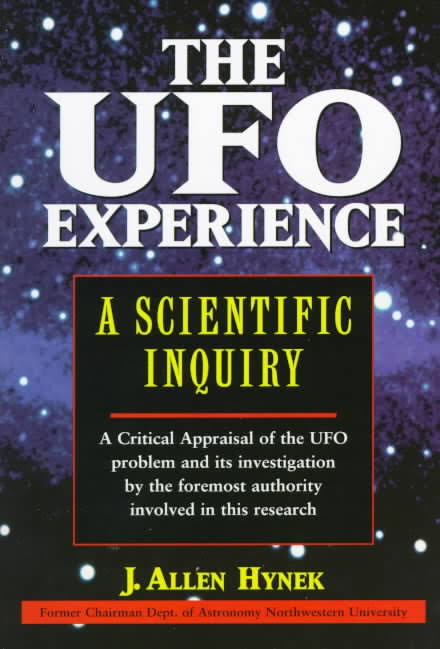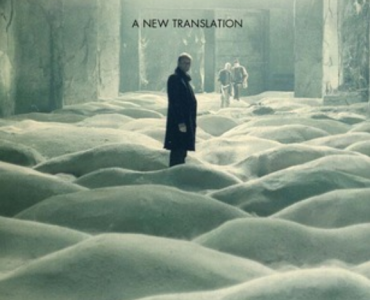Pros
- Methodical approach only considers the most unusual cases that are not likely to be hoaxes or misidentifications
- Well written and organized reports of UFO sightings along with reported data when available
- Categorized by type of like Close Encounters of the First, Second, and Third Kind
- Data is organized and made available for analysis or for the reader to make his own judgement
Cons
- Some repetition of the methodology that constantly reminds readers
The UFO Experience Review
The UFO Experience: A Scientific Inquiry by J. Allen Hynek is a must-read for anyone interested in learning about the more credible cases taking place during the height of UFO sightings taking place after World War II.
Dr. Hynek earned a Ph.D. in Astrophysics and was a professor and chairman of the astronomy department at Northwestern University. No one disputes his credibility or authority, but the comments he made during his investigations for Project Sign and Project Blue Book would contribute to the growing ridicule many suffered for reporting UFO sightings.
Dr. Hynek is probably best remembered for his remark about swamp gas during some sightings of strange lights in Dexter, Michigan. While the residents disagreed with that conclusion, the media accepted the more scientific and banal conclusion because it came from someone with authority.
While Hynek would eventually come to regret his comment about swamp gas, and perhaps regret the damage he did to discourage people from reporting UFO sightings, he still continued to investigate credible UFO reports.
That’s where The UFO Experience comes in. This book attempts to organize, categorize, and apply a more scientific methodology to credible UFO reports, even going as far as including reports from Project Blue Book.
What Hynek does well in this book is to weed out hundreds, potentially thousands, of UFO reports and applying a strict criteria to the remaining reports for inclusion into this book. Some of these criteria include:
- Sightings with more than one eyewitness to reduce fraud
- Credible observers who could provide more detail
- Type of encounters, including encounters with physical evidence left behind
The way the book is organized is logical, with the data regarding the sightings presented in the chapters, as well as references for more research. While the data may not have been what readers wanted, like chemical analyses, physical evidence, or clear photographs, it’s still better than what most UFO reports contain today.
The witnesses Hyneks includes are police officers, military personnel, and scientists, as well as just everyday people. Some of the reports Hynek includes in the book are very detailed, clearly illustrating the eyewitness’ sanity and intellect.
One interesting mention in the book is regarding the Invisible College. D. W. Pasulka mentions this “college” or group of scientists in her book American Cosmic, a review of which is linked below. While Hynek doesn’t really expand on this subject, it’s a bit of a relief to know that someone is attempting to unravel the mystery.
What Hynek repeats again and again in the book is the need for more investigation and research into the phenomenon. Nowhere does he claim that the UFOs are alien visitors from space, but his pleas illustrate the stubbornness he knew he would encounter with the book’s publication. This fear of ridicule is present in every letter that Hynek includes with the book.
Readers will find the reports fairly credible and the writing clear and logical. Hynek’s clearly passionate about understanding the phenomenon, and perhaps there’s a tone of regret implicit in the transparency and methodology that he applies to the UFO reports.
The UFO Experience: A Scientific Inquiry by J. Allen Hynek won’t provide readers with any definitive answers about who, what, or where UFOs come from. But what it does do is show a scientist who takes the subject seriously, and the book’s publication in the early 1970s shows that even scientists during that decade were still struggling with the phenomenon.
Read reviews of other similar books.

